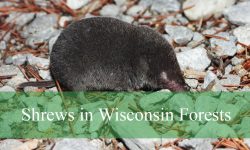Arizona is a top destination for birdwatchers thanks to its incredible variety of hummingbirds. The state’s diverse landscapes—from desert lowlands to mountain forests—provide ideal habitats for many species. Hummingbirds in Arizona are especially vibrant and active, making them a favorite for nature enthusiasts.
This article explores 12 of the most common and remarkable hummingbird species found across Arizona. With detailed descriptions, vivid pictures, and helpful identification tips, you’ll learn how to recognize each bird and understand its unique behaviors and habitats.
From city gardens to remote wilderness, Hummingbirds in Arizona can be seen throughout the year. This guide provides everything needed to enjoy and understand these remarkable birds in one of the best states for hummingbird watching.
Common Hummingbirds in Arizona
Anna’s Hummingbird (Calypte anna)
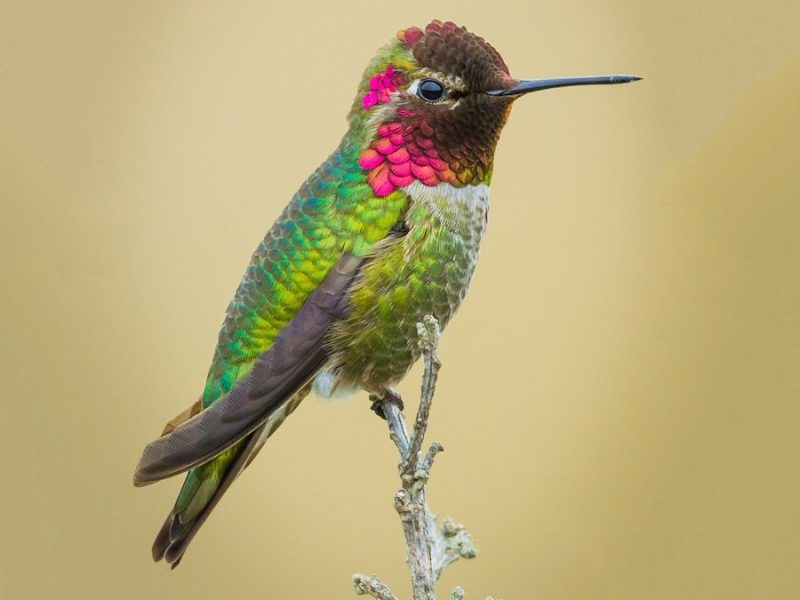
Anna’s Hummingbird is a year-round resident throughout much of Arizona, including urban and suburban areas. Adult males are striking with iridescent emerald green feathers covering their back and head, and a vibrant rose-pink throat patch (gorget) that shines brilliantly in the sunlight. Females and immature males have duller green backs with grayish-white underparts and lack the bright throat coloration. This medium-sized hummingbird measures about 3.9 to 4.3 inches (10 to 11 cm) in length with a slender bill adapted for nectar feeding.
Anna’s Hummingbirds are highly adaptable and thrive in a variety of environments, including city parks, gardens, desert scrub, and open woodlands. They are well known for visiting backyard feeders and ornamental flowering plants, which provide a steady source of nectar throughout the year. This adaptability to human-altered landscapes has helped maintain stable populations in Arizona, even in areas with limited natural flowering plants.
Their diet mainly consists of nectar from a wide range of flowers, which provides energy for their high metabolism and rapid wing beats. In addition to nectar, Anna’s Hummingbirds consume small insects and spiders to fulfill protein needs. They catch insects mid-air or glean them from leaves and spider webs, especially during the breeding season when protein requirements increase.
In Arizona, Anna’s Hummingbirds are widespread, found from low desert areas to higher elevations up to about 7,000 feet. They are commonly seen throughout the state’s urban centers, as well as in riparian corridors and oak woodlands. Their ability to tolerate cooler temperatures and use feeders allows them to remain in Arizona year-round, unlike many other hummingbird species that migrate.
Rufous Hummingbird (Selasphorus rufus)
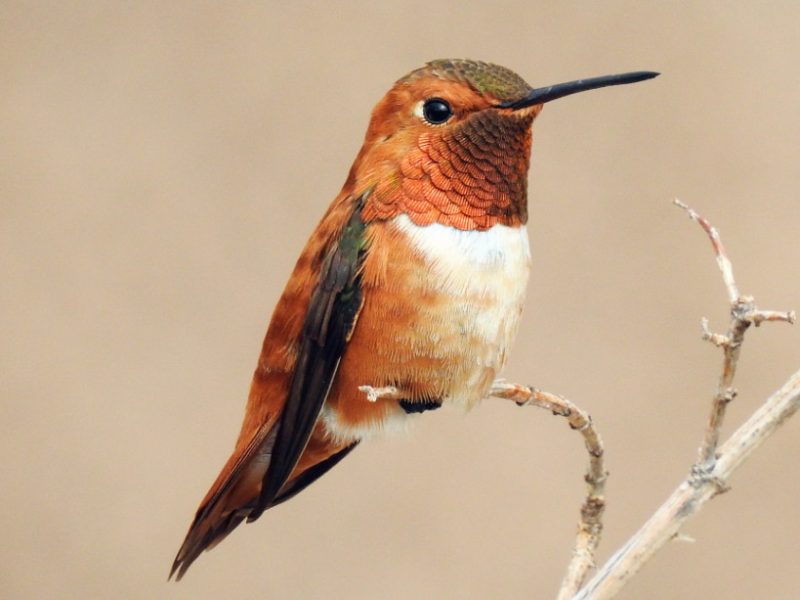
The Rufous Hummingbird is famous for its fiery orange coloration, making it one of the most vividly colored hummingbirds in Arizona during migration seasons. Males have bright orange backs, throats, and flanks, while females and immature birds display a more muted palette with greenish backs and orange spotting on the throat. Rufous Hummingbirds are relatively small, measuring approximately 3 to 3.5 inches (7.5 to 9 cm) in length, with a slightly curved bill suited for nectar feeding.
Unlike Anna’s, Rufous Hummingbirds are primarily migratory visitors in Arizona, arriving in spring and fall as they travel between their wintering grounds in Mexico and breeding sites in the Pacific Northwest and northern Rocky Mountains. During migration, they frequent desert and mountain habitats, often making stops to feed on nectar-rich flowers and backyard feeders. Their aggressive behavior is well documented, as males defend feeding territories vigorously.
Their diet consists mainly of nectar from tubular flowers, including penstemon, columbine, and bee balm, which provide essential energy for long migrations. Rufous Hummingbirds also consume small insects caught mid-flight or gleaned from plants, which supply proteins necessary for growth and reproduction. Their feeding habits play an important role in pollination of native plants across Arizona.
In Arizona, Rufous Hummingbirds can be observed primarily during migration in desert scrub, riparian zones, and mountain meadows. They are most commonly seen from March to May during their northward journey and from August to October on their way south. Although not a year-round resident, their vibrant presence makes them a favorite among birdwatchers throughout the state.
Broad-billed Hummingbird (Cynanthus latirostris)
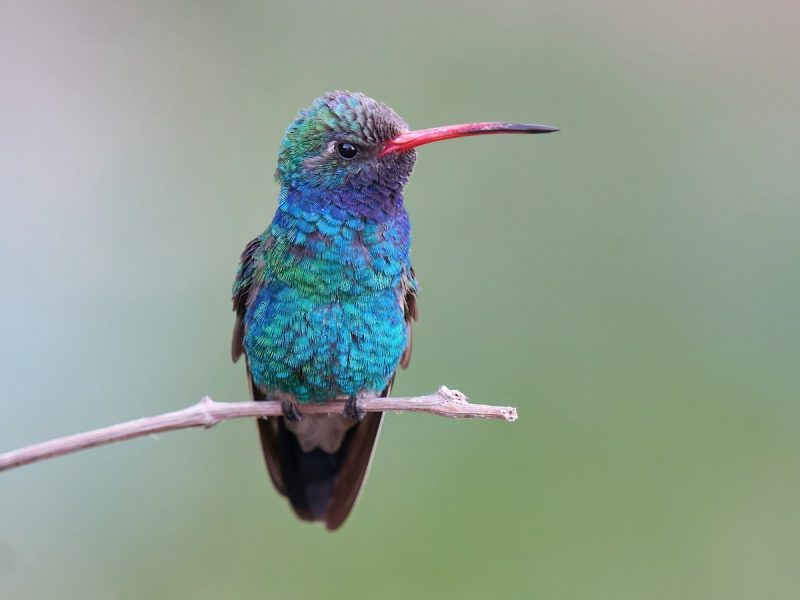
The Broad-billed Hummingbird is one of the most colorful hummingbirds in Arizona, easily identifiable by its bright turquoise blue body and a broad, straight red bill with a black tip. Males display brilliant iridescent plumage with blue-green throats, while females are duller with greenish underparts and a white throat. They are medium-sized, about 3.5 to 4 inches (9 to 10 cm) long, with a slightly longer bill adapted for feeding on deep tubular flowers.
This species primarily breeds in southeastern Arizona, favoring riparian habitats such as streamside woodlands and canyons where flowering plants are abundant. Broad-billed Hummingbirds require areas with dense vegetation and ample water sources, which support a variety of nectar-producing plants. They are often seen darting energetically among flowers and defending feeding territories from rivals.
Their diet consists mainly of nectar from native plants such as desert honeysuckle, penstemon, and sages. Like other hummingbirds, they supplement their nectar diet with small insects and spiders for protein, which is especially important during the breeding season. Their foraging behavior helps pollinate many flowering plants, making them key players in desert and riparian ecosystems.
In Arizona, the Broad-billed Hummingbird is mostly confined to the southeastern corner of the state, including Cochise and Santa Cruz counties. This region provides the warm climate and specialized habitat they need to thrive. They can be seen from early spring through late summer, often near watercourses and shaded canyon areas rich in flowering vegetation.
Black-chinned Hummingbird (Archilochus alexandri)
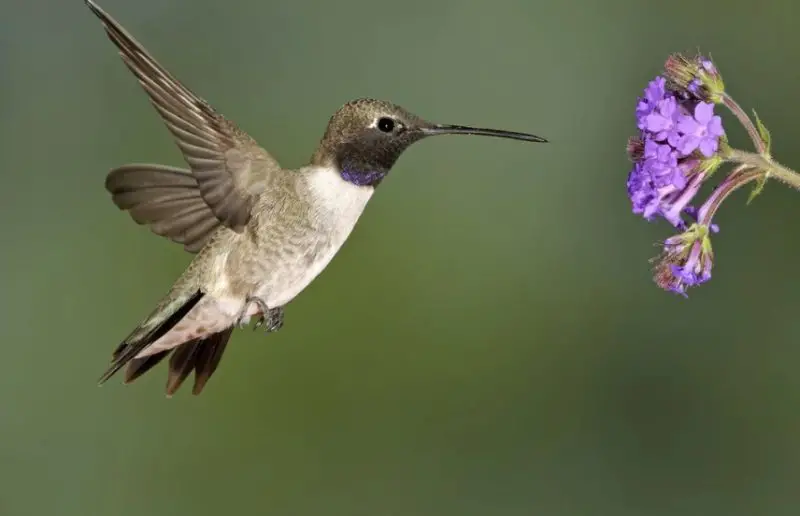
The Black-chinned Hummingbird is a common species throughout Arizona and is easily recognized by males’ distinctive black throat bordered with an iridescent violet base. Females lack the black throat and have a pale, lightly spotted throat and greenish backs. They are small hummingbirds, approximately 3 to 3.5 inches (7.5 to 9 cm) long, with a straight bill suited for nectar feeding and insect hunting.
This adaptable species inhabits a wide range of environments, from desert scrub and chaparral to mountain foothills and canyons. Black-chinned Hummingbirds often nest in shrubs or trees, choosing spots that provide good cover from predators. They are also frequent visitors to backyard feeders, where they exhibit territorial behavior by chasing away other hummingbirds.
Their diet includes nectar from a variety of flowers such as bee balm, trumpet vine, and penstemon, providing quick energy. Additionally, they consume small insects caught in flight or plucked from vegetation, essential for protein. Black-chinned Hummingbirds are active foragers and can often be seen hovering near flowers or making short flights to capture prey.
In Arizona, this species is widespread and found from low desert elevations to mountainous areas up to 7,000 feet. Their flexible habitat preferences and tolerance of human presence make them one of the most commonly seen hummingbirds across the state, from urban gardens to natural desert landscapes.
Calliope Hummingbird (Selasphorus calliope)
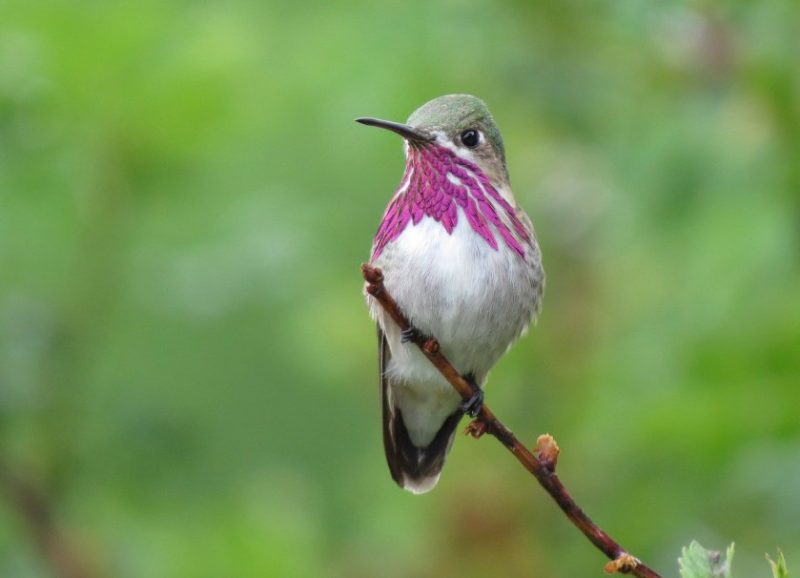
The Calliope Hummingbird is the smallest hummingbird in North America, measuring only about 3 inches (7.5 cm) in length. Males are notable for their striking magenta throat patch (gorget) with long, pointed throat feathers that shimmer brilliantly in sunlight. Females are duller, with grayish-white underparts and subtle green backs. Despite their tiny size, Calliope Hummingbirds are strong fliers and long-distance migrants.
These hummingbirds breed in mountainous regions of Arizona during the summer, preferring coniferous forests, alpine meadows, and areas with abundant wildflowers. They are typically found at higher elevations ranging from 5,000 to 9,000 feet, where cooler temperatures and blooming flowers coincide during the breeding season.
Calliope Hummingbirds feed primarily on nectar from a wide variety of flowers, including columbine, lupine, and paintbrush. Their slender bills allow them to reach deep into tubular flowers for nectar. They also hunt tiny insects and spiders for protein, which is particularly important during nesting and chick-rearing periods.
In Arizona, Calliope Hummingbirds are seasonal residents, usually present from late spring through early fall. They migrate southward to Mexico and Central America for the winter. Birdwatchers seeking this tiny species often find them in the mountainous regions of northern and eastern Arizona, where they delight observers with their energetic flight and dazzling throat coloration.
Broad-tailed Hummingbird (Selasphorus platycercus)
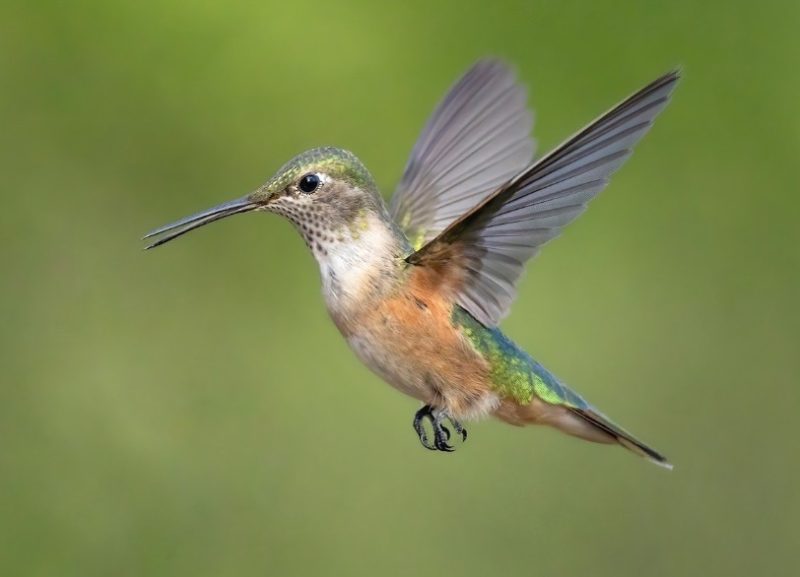
The Broad-tailed Hummingbird is a medium-sized hummingbird, about 3.5 to 4 inches (9 to 10 cm) long, notable for the males’ rose-red throat patch and bright green backs. Females and immature birds have greenish backs and pale throats with faint spotting. This species gets its name from the broad tail feathers that create a distinctive whirring or buzzing sound during flight displays.
Found mostly in higher elevation forests and mountain meadows of Arizona, Broad-tailed Hummingbirds prefer coniferous woodlands, aspen groves, and alpine environments. They are typically seen between 6,000 and 10,000 feet elevation, where flowering plants are abundant in summer months. These hummingbirds are known for their spectacular aerial displays, where males produce tail sounds to attract females.
Their diet consists largely of nectar from flowers such as columbine, penstemon, and paintbrush. Like other hummingbirds, they supplement nectar with small insects and spiders, which provide essential protein. Their foraging behavior helps pollinate many mountain wildflowers, contributing to the health of high-elevation ecosystems.
In Arizona, Broad-tailed Hummingbirds are seasonal breeders, arriving in late spring and departing by early fall. They are commonly found in northern and eastern mountainous regions, including the Mogollon Rim and White Mountains. Their unique tail sound and bright colors make them a favorite for birdwatchers exploring Arizona’s high country.
Violet-crowned Hummingbird (Amazilia violiceps)
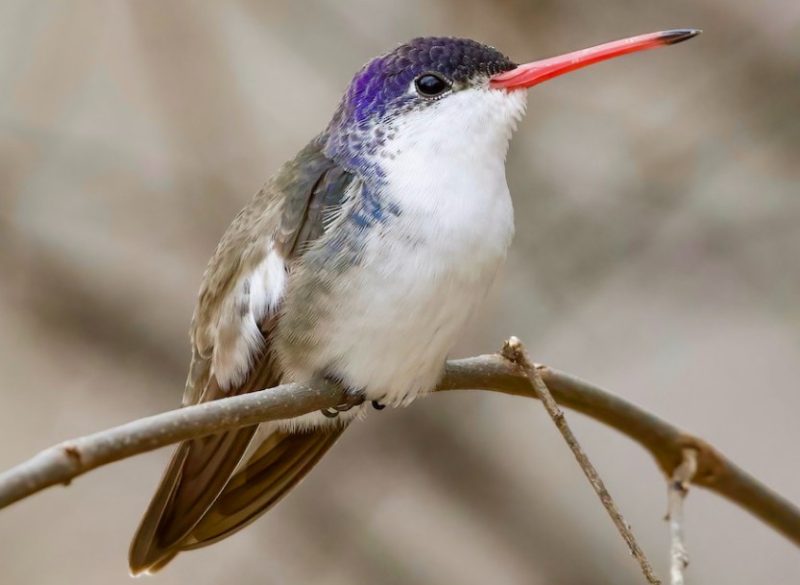
The Violet-crowned Hummingbird is an elegant and striking species, easily recognized by its pure white chest and distinctive violet crown atop its head. Males have a brilliant iridescent green back and wings, complemented by their unique crown color. Females are slightly duller, with less vivid crown coloration but the same white underparts. This medium-sized hummingbird measures approximately 3.5 to 4 inches (9 to 10 cm) in length, with a slender, straight bill perfectly suited for nectar feeding.
Primarily found in southern Arizona, Violet-crowned Hummingbirds favor riparian habitats where water and dense vegetation create ideal conditions. They are most often spotted along streams and rivers in the desert southwest, especially in oak woodlands and thornscrub areas. These habitats provide abundant flowering plants that are essential for their diet and nesting needs.
Their diet mainly consists of nectar from tubular flowers such as penstemons, sages, and desert honeysuckle, offering the high energy needed for their rapid wing beats and active lifestyle. In addition to nectar, they consume small insects and spiders, which provide necessary protein for growth and reproduction. Their feeding behavior helps pollinate many native plants, supporting the health of riparian ecosystems.
In Arizona, Violet-crowned Hummingbirds are relatively rare but highly prized by birdwatchers. Their range is limited mostly to the southernmost parts of the state, including Santa Cruz and Cochise counties. Observers often find them during the warmer months when flowers are in bloom, making sightings a special treat for enthusiasts visiting Arizona’s desert river habitats.
Allen’s Hummingbird (Selasphorus sasin)

Allen’s Hummingbird is a rare and mostly migratory species in Arizona, appearing primarily during spring and fall migration periods. Males exhibit bright orange backs and throats contrasted with green highlights, while females and immature birds are paler with spotted throats and green backs. This small hummingbird measures about 3.5 to 4 inches (9 to 10 cm) in length and has a slightly curved bill adapted for feeding on tubular flowers.
While primarily breeding along the Pacific coast in California, Allen’s Hummingbirds occasionally stray into Arizona during migration. They prefer habitats with abundant flowering plants such as coastal scrub, chaparral, and garden areas. In Arizona, sightings are uncommon but highly sought after by birdwatchers due to their vibrant plumage and rarity.
Their diet consists of nectar from native flowers and feeders, supplemented by small flying insects. As they migrate, they require reliable nectar sources to fuel their long journeys, often stopping in Arizona’s varied habitats to rest and feed. Their feeding behavior aids pollination in both their breeding and migratory habitats.
Allen’s Hummingbirds remain a rare but exciting visitor to Arizona. Their presence during migration adds to the state’s rich hummingbird diversity, offering birders the chance to observe a Pacific coast species outside its typical range.
Blue-throated Hummingbird (Lampornis clemenciae)
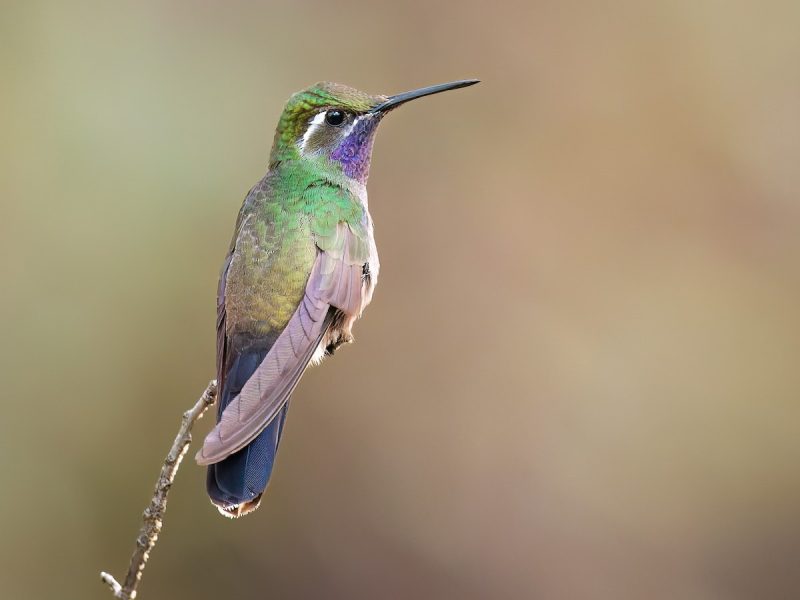
The Blue-throated Hummingbird is the largest hummingbird species found in the United States, measuring around 4 to 5 inches (10 to 13 cm) in length. Males are particularly striking with their iridescent blue throat patch contrasting against greenish upperparts and white underparts. Females have a similar coloration but with less intense throat color and more muted tones overall. Their long, straight bill is perfectly designed to access nectar deep within flowers.
This species primarily inhabits mountain canyons and wooded areas in southeastern Arizona, especially at elevations between 3,000 and 6,000 feet. They prefer oak and pine-oak woodlands where flowering trees and shrubs provide ample nectar sources. Their habitat choices often include riparian corridors with dense vegetation, offering shelter and feeding opportunities.
Blue-throated Hummingbirds feed on nectar from large tubular flowers and tree blossoms, such as coral trees and trumpet vines, which match their larger size and bill. They also consume insects and spiders for protein, actively catching prey in flight or gleaning from foliage. Their feeding habits help pollinate several important plant species in their mountainous ecosystems.
In Arizona, Blue-throated Hummingbirds are localized but can be reliably found in the mountainous southeastern region during the breeding season. Their size and striking blue throat make them a spectacular sight for birders exploring Arizona’s high-elevation woodlands.
Lucifer Hummingbird (Calothorax lucifer)

The Lucifer Hummingbird is a small but distinctive species, measuring about 3.5 inches (9 cm) in length, characterized by its long, slender, and strongly curved bill. Males boast an iridescent red throat patch and dark, almost black plumage on the back, with white underparts. Females are less brightly colored, with grayish upperparts and pale throats. Their unique morphology helps them access nectar from deep, narrow flowers.
Found primarily in desert scrub and rocky foothill habitats, Lucifer Hummingbirds are adapted to harsh, arid environments of southern Arizona and northern Mexico. They often inhabit rugged, dry areas with sparse vegetation, where few other hummingbird species can thrive. Their specialized bill shape allows them to feed on flowers that are inaccessible to many competitors.
Their diet consists mostly of nectar from desert-adapted plants such as ocotillo, desert willow, and penstemons. They also catch small insects and spiders, supplementing their diet with protein essential for survival in the resource-scarce desert. Their feeding helps pollinate many desert flowers, contributing to ecosystem balance.
In Arizona, the Lucifer Hummingbird is an uncommon but fascinating species, typically found in the lower desert regions and foothills. Their unique appearance and specialized habits make them a favorite among birders interested in desert-adapted wildlife.
White-eared Hummingbird (Hylocharis leucotis)
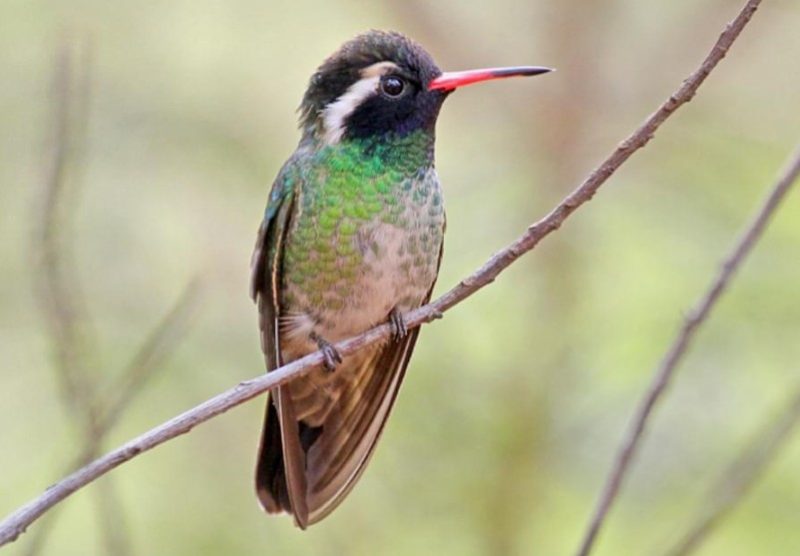
The White-eared Hummingbird is a small, agile species that measures about 3 to 3.5 inches (7.5 to 9 cm) in length. It is instantly recognizable by the prominent bright white patch located just behind each eye, which contrasts sharply against its iridescent green head and back. Males exhibit a shimmering green throat and breast, while females tend to have duller green tones and a paler underbelly. Their slender, slightly curved bill is perfectly adapted to extract nectar from tubular flowers.
This species is known for its quick, darting flight and active feeding behavior. White-eared Hummingbirds are territorial and will often chase away other hummingbirds from their favored feeding areas. They feed primarily on nectar from a variety of native plants such as penstemons, columbines, and trumpet flowers. In addition to nectar, they catch small insects and spiders, which supply essential protein, especially during breeding season.
White-eared Hummingbirds prefer high elevation habitats, mostly pine-oak forests and canyons, where dense vegetation provides shelter and abundant nectar sources. In Arizona, they are mostly found in the mountainous regions of the southeastern part of the state, including the Huachuca and Santa Rita Mountains. Their habitat choice reflects their need for cooler, forested environments with plentiful flowers.
Although less commonly seen than some other Arizona hummingbirds, the White-eared Hummingbird is a prized sight for birders visiting the mountain ranges. Their distinctive white ear patch and rapid, acrobatic flight make them relatively easy to identify for those exploring Arizona’s high-elevation woodlands.
Rivoli’s Hummingbird (Eugenes fulgens)
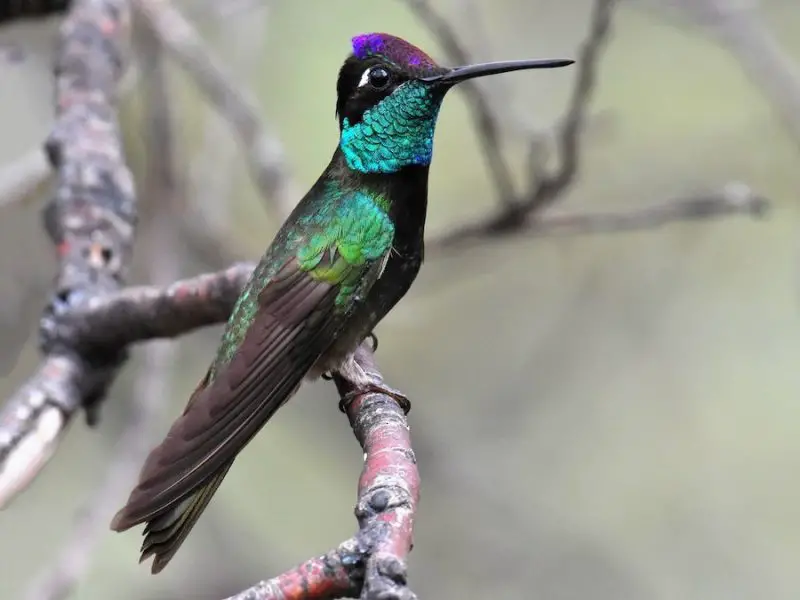
Rivoli’s Hummingbird, also known as the Magnificent Hummingbird, is one of the larger hummingbird species found in Arizona, measuring approximately 4 to 4.5 inches (10 to 11.5 cm) in length. Males have a dazzling iridescent green body with a deep purple throat patch (gorget) that shimmers in the sunlight. Their tails are dark with white tips, and their bills are long and straight. Females are similar in coloration but lack the bright throat patch and show more muted colors on the underparts.
Behaviorally, Rivoli’s Hummingbirds are known for their slower, more deliberate flight compared to smaller hummingbirds. They are often seen hovering near large flowers such as trumpet vines, honeysuckle, and agave, where they feed on nectar. Like other hummingbirds, they also consume small insects and spiders to meet their protein needs. Males are territorial during breeding season and perform aerial displays to attract females.
In Arizona, Rivoli’s Hummingbirds are primarily residents of high-elevation pine-oak forests and mountainous regions in the southeastern part of the state. They prefer elevations between 5,000 and 9,000 feet, where cooler temperatures and abundant flowering plants create ideal conditions. Key areas for sightings include the Chiricahua and Huachuca Mountains.
Due to their larger size and striking coloration, Rivoli’s Hummingbirds are a favorite among birdwatchers visiting Arizona’s mountain ranges. Their presence adds to the state’s impressive hummingbird diversity and highlights the importance of preserving high-altitude forest habitats for these magnificent birds.






